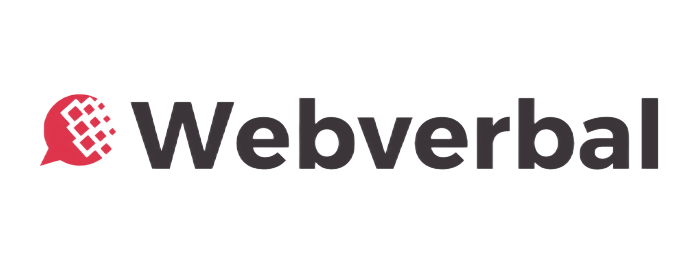Table Of Content
₹2,000 worth of items. Added to cart. Abandoned at checkout.
If you run an Indian e-commerce store, you know this script too well. But what is surprising is when it happens. Data shows the peak hour for cart abandonment in India isn’t during the busy work day, but around 11:00 PM, when millions of Indians are scrolling before sleep.
This guide decodes the psychology behind this phenomenon and offers a recovery playbook for D2C founders.
The Core Insight: Why 11 PM?
Unlike Western consumers who shop during lunch breaks, Indian consumers exhibit a “Dual-State” browsing behavior. The 11 PM abandonment spike is not a rejection of the product, but a “Save for Spouse” or “Financial Validation” ritual.
Key Behavioral Data:
- Browsing Peak: 9:00 PM – 11:00 PM (Post-dinner leisure).
- Abandonment Peak: 11:15 PM (The moment of payment friction).
- Conversion Recovery: 10:00 AM the next day (Post-validation purchase).
The Disconnect: It’s Not Demand, It’s Entertainment
Cart abandonment is a global challenge—Statista reports that 70% of online shopping carts never convert. But in India, the problem has a unique behavioral twist.
1. The “Netflix” Effect Why 11 PM? It ties back to India’s digital routines. Urban Indians finish work, dinner, and family time, then finally get “me time” on their phones. Scrolling e-commerce apps becomes entertainment—like Netflix or Instagram—but without strong purchase intent.
2. The Cart as a Wishlist Indian shoppers often use the cart as a temporary “save for later” button to compare prices across Amazon, Flipkart, and local stores. They are creating artificial demand signals without real transactional intent.
3. Technical Friction (The UPI Lag) Payment hesitancy is higher at night. Banking servers often undergo maintenance between 11:30 PM and 1:00 AM, leading to UPI failures. A failed transaction at midnight is rarely retried immediately; the user simply goes to sleep.
Part of the reason for 11 PM abandonment is payment failure. Check my guide on [Best Payment Gateways for India] to fix your stack.
Metro vs. Bharat: A Tale of Two Carts
Understanding who is abandoning the cart is just as important as when. The behavior in Mumbai (Metro) differs vastly from Bhubaneswar (Tier 2).
| Behavior Metric | Metro Consumer (Mumbai/Delhi) | Tier 2 Consumer (Jaipur/Bhubaneswar) |
| 11 PM Activity | “Doomscrolling” & Impulse Add-to-Cart | “Researching” & Price Comparison |
| Primary Friction | Payment Gateway Failure / OTP Delay | “Need to ask family” / Cash Flow check |
| Cart Value | High (₹2,000+) | Moderate (₹500 – ₹1,500) |
| Recovery Tactic | WhatsApp Reminder at 9 AM | Discount Coupon (₹50 off) at 10 AM |
The Founder’s Fix: The “Midnight Nudge” Strategy
Many founders misread consumer psychology. They assume high late-night cart activity equals high demand. In reality, it’s window-shopping in digital form.
Urgency tactics (“Only 2 left in stock”) perform worse late at night in Tier-2 cities compared to metro buyers. Shoppers are less likely to hit “Buy Now” when they know delivery is two days away and cash flow is tight.
The Playbook for Recovery:
- The 11 PM Freeze: Do not trigger any notification between 11 PM and 8 AM. Aggressive “You left this behind!” emails at midnight are ignored or viewed as intrusive.
- The 10 AM Nudge: Send a WhatsApp message (not email) at 10:15 AM the next day.
- Why: This aligns with the Indian habit of “discussing at breakfast, buying at work.”
- The Value Hook: Do not just remind them; incentivize the friction.
- Script: “Good morning! Your cart is waiting. Did you need to double-check with anyone? Here is a 5% off code valid until noon.”
Is Your Checkout Flow Leaking Revenue?
If you are seeing high cart abandonment between 10 PM and Midnight, your problem might not be “Price”—it might be “Friction.”
As a Strategic Advisor, I help D2C founders implement the “Adoption Code”—a forensic audit of your user journey to identify exactly where Bharat consumers are dropping off and how to nudge them back without burning money on ads.
Stop guessing. Let’s fix your conversion rate. 👉 [Book a 30-Minute Discovery Call with Debansh]
Frequently Asked Questions About Indian Cart Abandonment
Unlike US consumers who pay via Credit Card (seamless), 60-70% of Indian Tier-2 orders are Cash on Delivery (COD) or UPI. The friction of switching apps for UPI or the “guilt” of selecting COD often causes a momentary pause at the checkout step, leading to abandonment.
Data suggests that 10:00 AM to 11:00 AM on the following day is the “Golden Window.” Sending an email immediately at 11:00 PM (when the abandonment happened) is ineffective because the consumer is likely sleeping or in “passive browsing” mode.
Yes, but only if displayed before checkout. In India, “Hidden Shipping Costs” revealed at the final payment page is the #1 reason for abandonment (approx. 54% of cases). Displaying “Free Shipping” on the Product Page creates a psychological commitment to buy.
In India’s collective culture, purchases above ₹1,500 often require a “consultation” with a spouse or parent. Late-night browsing (11 PM) is for selection, but the purchase is often deferred to the morning after this consultation occurs.
(For more on how pricing shapes consumer choices, see [The Complete Guide to Pricing Psychology in India ])




